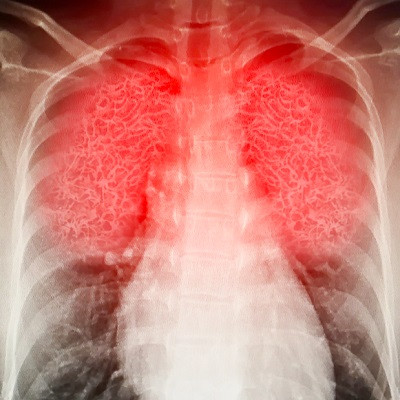
2022-01-01
Visited : 1993
Targeting neutrophils, a type of white blood cell that, when overactive, contributes to acute lung inflammation, is a potential new route to diagnose and treat acute respiratory distress syndrome.
The COVID-19 pandemic highlighted the devastating impact of acute lung inflammation (ALI), which is part of the acute respiratory distress syndrome (ARDS) that is the dominant cause of death in COVID-19. A potential new route to the diagnosis and treatment of ARDS comes from studying how neutrophils – the white blood cells responsible for detecting and eliminating harmful particles in the body – differentiate what materials to uptake by the material’s surface structure, and favor uptake of particles that exhibit “protein clumping,” according to new research from the Perelman School of Medicine at the University of Pennsylvania. The findings are published in Nature Nanotechnology.
Researchers investigated how neutrophils are able to differentiate between bacteria to be destroyed and other compounds in the bloodstream, such as cholesterol particles. They tested a library consisting of 23 different protein-based nanoparticles in mice with ALI which revealed a set of “rules” that predict uptake by neutrophils. Neutrophils don’t take up symmetrical, rigid particles, such as viruses, but they do take up particles that exhibited “protein clumping,” which the researchers call nanoparticles with agglutinated protein (NAPs).
“We want to utilize the existing function of neutrophils that identifies and eliminates invaders to inform how to design a ‘Trojan horse’ nanoparticle that overactive neutrophils will intake and deliver treatment to alleviate ALI and ARDS,” said study lead author Jacob Myerson, PhD, a postdoctoral research fellow in the Department of Systems Pharmacology and Translational Therapeutics. “In order to build this ‘Trojan horse’ delivery system, though, we had to determine how neutrophils identify which particles in the blood to take up.”
ALI and ARDS are life-threatening forms of respiratory failure with high morbidity and mortality rates. Prior to COVID-19, there were 190,000 annual cases of ARDS in the U.S. and 75,000 deaths, with the ARDS being caused by pneumonia, sepsis, and trauma. However, COVID has increased ARDS cases into the millions. When ALI or ARDS occurs, the lung’s air sacs recruit neutrophils to the lungs in order to eliminate circulating microbes. This process causes neutrophils to release compounds that further aggravate lung injury and damage the air sacs, so patients develop low blood oxygen levels. Unfortunately, despite the severity of ALI/ARDS, there is no effective drug to control it, and treatment currently focuses on supporting patients while the lungs naturally, but slowly, heal.
To address ARDS and other medical problems, researchers at Penn and elsewhere have been using nanoparticles to concentrate drugs in injured or diseased organs. Such nanoparticles are also being used for gene therapy and immunotherapy.
The researchers note that while the development of viable therapies for ALI/ARDS using nanoparticles to deliver treatments via neutrophils are a long way off, this research represents a significant step in understanding the condition and function of the immune system.
“Now that we have determined that neutrophils patrol for nanoparticles with agglutinated protein, our next step is to understand how and why other microbes, like viruses, which are rigid and symmetrical, evolved to evade neutrophils,” said senior author Jacob Brenner, MD, PhD, an associate professor of Pulmonary Medicine in the Division of Pulmonary, Allergy, and Critical Care. “With this knowledge, we can continue to utilize this unique combination of material science and engineering, to create disease-specific therapies that target more advanced and complicated pathologies.”
Read the original article on University of Pennsylvania.